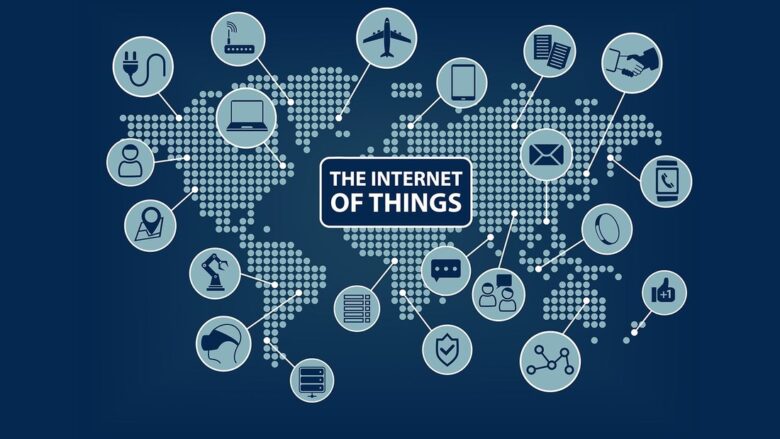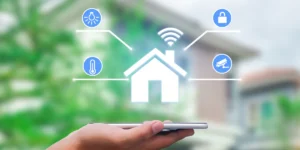The Internet of Things (IoT) is quietly transforming everyday devices into intelligent companions that anticipate our needs and simplify our daily lives. IoT devices form the invisible link between our physical and digital lives, from our alarm clocks to smart alarm clocks that adapt to our sleep patterns and workplace door locks. This technological revolution has created an interconnected ecosystem where homes, businesses, and cities can seamlessly communicate with each other, improving not only convenience but also efficiency, safety, and quality of life.
Sensors, wireless connectivity, and artificial intelligence enable everyday objects to collect data, make decisions, and respond to our preferences in ways that were unthinkable just a decade ago. Understanding the impact of billions of smart devices on our daily lives is crucial to navigating this connected future. Intelligent automation and data-driven insights are transforming the way we interact with our environment and manage our daily lives in the IoT.
The Rise of the IoT in Everyday Life:
Over the past five years, advancements in wireless technology, ever-smaller sensors, and falling component costs have ushered in a massive increase in IoT devices in our daily lives. What began as smart thermostats and home security systems has evolved into a network of intelligent devices that monitor, analyze, and respond to our daily behavior. Smart refrigerators that manage grocery store inventory and voice assistants that coordinate countless home systems are among the more than 25 connected devices in modern homes.
This expansion reflects technological advancements and evolving consumer expectations for personalized, automated services tailored to their interests and lifestyles. Artificial intelligence and IoT sensors enable devices to learn user behavior, anticipate needs, and automatically adjust settings. Cloud computing infrastructure processes vast amounts of sensor data and enables remote management of this ecosystem of devices via smartphones. In addition to individual devices, smart ecosystems, consisting of products from multiple manufacturers connected via established protocols, provide a seamless user experience across brand boundaries.
Automation and Smart Homes:
Smart automation solutions make homes more comfortable, secure, and energy-efficient. Smart lighting systems adjust brightness and color temperature based on the time of day, occupancy patterns, and natural light, optimizing productivity, relaxation, and sleep quality while saving energy. Advanced HVAC systems learn a family’s schedules and preferences, preheating or cooling rooms before guests arrive, and optimizing energy consumption during downtime. Smart security systems utilize various sensors, cameras, and access control systems to provide comprehensive protection and can be monitored and managed via mobile apps.
Smart kitchen assistants are capable of providing recipes tailored to specific ingredients, overseeing the cooking process, and automatically modifying settings to achieve the best results. To provide an immersive experience, home entertainment systems can now predict viewing habits, adjust audio based on the room’s acoustics, and work seamlessly with other smart devices. Water management systems can detect leaks, track consumption, and adjust watering schedules to conserve resources and maintain a healthy landscape. These integrated systems enable the creation of living spaces that intuitively meet tenant needs while simultaneously improving sustainability and efficiency.
Health Monitoring and Wearable Technology:
Wearable IoT devices are revolutionizing personal health monitoring by providing real-time physiological data previously available only through clinical trials. Advanced fitness trackers offer health insights into heart rate variability, sleep quality, stress levels, and physical activity patterns, empowering users to make informed decisions about their health. Multi-sensor smartwatches can detect arrhythmias, monitor blood oxygen levels, monitor medication adherence, and respond to medical emergencies. Continuous glucose monitors help people with diabetes take control of their health by providing real-time blood sugar readings and early warnings of complications.
Smart clothing with sensors can monitor posture, muscle activity, and biomechanical patterns, helping athletes improve their performance and prevent injuries. Applications in senior care use wearable devices to monitor fall risk, medication adherence, and daily activity levels, offering families and caregivers peace of mind through remote monitoring. Mental health applications offer personalized advice for anxiety, depression, and other mental health conditions based on stress, sleep, and activity levels. Predictive health analytics using AI and wearable sensors can identify medical abnormalities before symptoms appear, enabling early intervention and improving health outcomes.
Smart Cities and Infrastructure:
The IoT in cities is making metropolitan infrastructure smarter, optimizing resource allocation, public safety, and the quality of life for millions of people. To reduce travel time and emissions, smart traffic management systems monitor congestion patterns, dynamically adjust traffic light times, and use sensors and cameras to recommend real-time routes. Smart streetlight networks adjust brightness based on pedestrian and vehicle traffic conditions and automatically indicate maintenance needs, saving energy and improving safety. Waste management systems use sensors to monitor bin levels, optimize collection routes, reduce truck runs, and increase recycling efficiency.
Environmental monitoring networks provide real-time data on air quality, noise pollution, and weather, enabling city officials to respond to pollution incidents and other environmental issues. Smart parking systems guide drivers to available spaces and implement dynamic pricing, increasing parking revenue in high-demand areas. IoT sensors track the location of vehicles, estimate arrival times, and optimize routes based on passenger demand and traffic conditions within public transportation networks. Emergency response systems utilize multiple data sources to provide first responders with recommendations regarding conditions, optimal routes, and resource availability, shortening response times and improving effectiveness.
Challenges and Considerations:
The rapid adoption of IoT devices raises privacy, security, and data management concerns that require careful analysis and proactive solutions. Cybersecurity vulnerabilities in connected devices can allow criminals to access personal data, control home systems, or launch cyberattacks on critical infrastructure. IoT devices continuously collect data and build comprehensive profiles of individual behavior, interests, and activities. This data can be misused for commercial purposes or shared without permission, raising privacy concerns. Interoperability issues between device manufacturers can fragment the user experience and limit the potential of connected ecosystems.
Premature obsolescence of IoT devices leads to e-waste, requiring frequent replacements and increasing costs for consumers. Network reliability and capacity can impact device performance, particularly in areas with weak internet infrastructure or during peak hours. IoT devices generate vast amounts of personal data, which can be stored and processed by companies with varying privacy and security standards, raising questions about data ownership and management. Technological developments can make it difficult for people with fewer technical skills to configure, manage, and repair connected devices without professional assistance.
The Future of Everyday IoT:
IoT technology will become increasingly integrated and intelligent as artificial intelligence (AI), edge computing, and 5G networks enable more advanced applications and real-time processing. To reduce disruptions, predictive maintenance systems will procure replacement parts and schedule repairs before equipment fails. Ambient computing will make technological interfaces virtually invisible, as sensors and processors are embedded in everyday materials and surfaces. Autonomous systems will coordinate complex tasks between devices and locations, enabling smart cities to adapt to changing conditions and user needs.
Healthcare applications will incorporate remote surgery, personalized treatment recommendations, and holistic health ecosystems with multiple data sources. Sustainability efforts will utilize IoT sensors to optimize resource utilization, minimize waste, and lessen the environmental impact of daily life. Privacy-preserving technologies will enhance the benefits of connected devices and give users more control over their data. Blockchain technology will enable secure, decentralized connectivity and data sharing among IoT devices while protecting user privacy and device security.
Embracing the Connected Future:
One of the greatest technological breakthroughs of our time is the transformation of everyday objects into smart, connected devices. This transformation is changing how we interact with our environment and how we live. As IoT technology continues to develop, it will significantly improve health, safety, and resource sustainability. Manufacturers, regulators, and users must focus on privacy, security, and interoperability to fully realize the benefits of connected technology while protecting individual rights and societal interests.
In this connected future, intelligent deployment, robust security, and user education are crucial so people can make informed decisions about their digital environment. The Internet of Things has already transformed our cities, homes, and personal lives, and its continued expansion promises an even greater transformation. Understanding the opportunities and challenges of everyday IoT can help us create a connected world that maximizes human potential while upholding societal values and freedoms. The future of the Internet of Things depends on our ability to use technology to improve the well-being of people and communities worldwide.
FAQs:
1. What is the Internet of Things (IoT)? What impact does it have on common devices?
IoT objects collect and exchange data through sensors, software, and network connectivity. These devices communicate over the internet or local networks, receive commands, and act autonomously based on algorithms or human preferences.
2. Is the IoT safe from hackers and privacy breaches?
To protect user data, IoT device manufacturers use stronger encryption, regular security updates, and multi-factor authentication. Change default passwords, upgrade firmware, and use a secure home network with a firewall to enhance security.
3. How much do IoT devices cost? Are they worth it?
IoT devices range in price from $20 smart plugs to $500 smart appliances. Many devices pay for themselves through energy savings, efficiency, and convenience. Evaluate the investment based on your needs, cost savings, and desired functionality.
4. Do IoT devices collect personal data? What happens to that data?
Most manufacturers collect data to improve device functionality and user experience. Read their privacy policies, adjust your sharing settings, and buy products from reputable companies that provide transparent, secure, and reliable data.
5. Will my IoT devices from different companies work together?
Many IoT devices support Wi-Fi, Zigbee, or Z-Wave for cross-brand compatibility. Smart home hubs like Google Home, Amazon Alexa, and Apple HomeKit can coordinate devices from multiple manufacturers, but advanced features may require support from a brand’s ecosystem.




